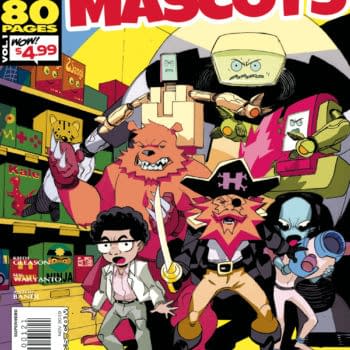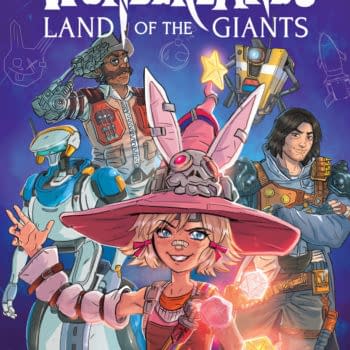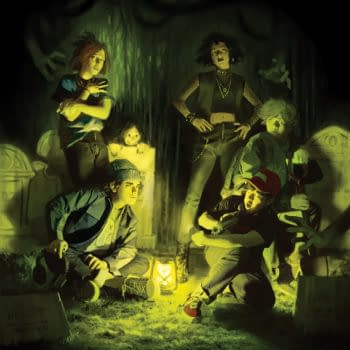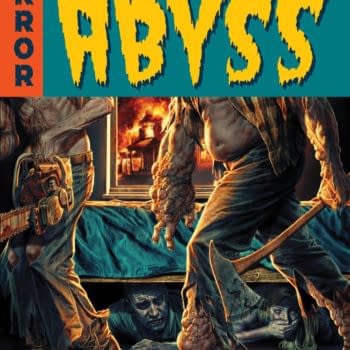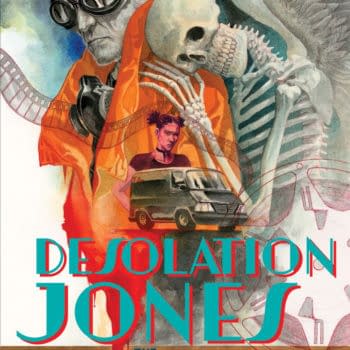Posted in: Comics | Tagged: gareb shamus, wizard magazine
The Rise And Fall Of Wizard World Digital
With news circulating around the Net about the apparent demise of Wizard World Digital, with a blog replacing it, this seemed like a good time to give a little view of what it was like on the inside.
On Sunday, January 23, I received a message on Facebook from Andrew Servin letting me know that Wizard was no more, and I should stop anything that I had been working for them. That was a little rough, considering that the income from the price guide and other miscellaneous features that I would do was a big reason that I was able to quit my day job and be a stay-at-home dad for my then-foster daughter while my partner stayed at his job. What made it rougher was the sheer glee that many on the Internet took in people losing their jobs. It was a magazine that they hated, but it was also people's lives that were going in the toilet, so the overly joyous commentaries were a bit much, and I wrote about that in a feature here at Bleeding Cool.
Two days later, I received a phone call from Mike Cotton, letting me know that while everyone else had been let go, he was still there, and they were working on a new, digital format, which he wanted me to be a big part of. It would mean a raise, but it would also mean significantly more work, as the goal was to put out a weekly guide, each one with a different theme.
After starting the first themed guide, I was told instead first to work on overhauling the 35-page guide that we had run in the magazine last year, with prices updated, listings added, and the prices all converted over into a template that worked with the new digital format.
I then submitted a few themed guides, only to have delays with production, as they tried finding the best ways to slot in the guide. That took a few weeks. Before that would happen, though, Mike Cotton was out in editorial, and in came Carlos Mejia.
In terms of editorial content, some of the work I did under Carlos was the best I had done while with Wizard, as Carlos allowed me to go after what might have been sacred cows in the past. In articles breaking down the "ages" of comics, I made a sharp break between the Copper Age and the Modern Age, with a long period in-between that I called comics' medieval period, also known as the Dark Ages. Here, I criticized multiple areas that Wizard itself had been part of the problem, albeit well before my time, looking at the overhyping of mediocre product, gimmick covers, and a plethora of intercompany crossovers used in large part to distract from the mediocrity of intra-company content.
Fan mail during this period was great, with some praising our willingness to call out this past, with others wondering why Wizard hadn't done the same thing 15 years earlier. I could not provide an answer to that, having only been writing for Wizard since 2009, but signaled a commitment by me and by those working with me on the magazine now not to go down a similar path like had occurred in the past.
Editorially, Carlos was outstanding to work with, but there continued to be financial issues, with missed payments, checks going out off of multiple accounts, and advertising, which was supposed to carry the digital magazine, slowly drying up. That's not to mention all of the subscribers from the magazine that had not been taken care of.
After a couple of months, Carlos would move on to other projects, and Mike Searle, who had worked with Wizard in the past, was now the person that I was working with. This made three editors I was working for in six months. Editorially, little changed, with Mike having no love for sacred cows either. However, the financial issues only continued to grow, leading to yet another change in format, as after about 5-6 weeks with Mike at the helm I was informed that the weekly guides would be removed in favor of a once-monthly, 20-page guide. I should point out here that the themed ones had been in the original plan 4-6 pages with additional editorial content from me, but there was only once where I submitted that few pages, with the average submission being 3-4 times that, so my guide work was almost half of the digital magazine, if not half, on any given week. What were they going to do with that extra space? No idea.
Then, I got another email. Mike Searle was gone, and in his place was Dessy Levinson. Dessy's job was to beef up the online, non-magazine content, and there was going to be a shift, with work being done on a daily basis on the site and the digital magazine acting as a "best of" supplement to the website. They would pay for daily submissions from me, and I was able to secure two per day.

When I informed them that I would be writing for Bleeding Cool as of November, I did not want to leave them in a bind, so I offered to submit one last price guide before that date, provided that it would be paid for at the regular rate. I never heard back at that point.
Within two weeks, the magazine concept would be distant memory, with a blog from Gareb all that remains for editorial content.
I loved my time with Wizard in terms of the opportunities it had presented me when I worked on the print magazine. I got to know quite a few truly talented people in the comic industry, many of who reached out to me when the magazine closed down to offer condolences, which meant the world to me. I also learned a lot from some very talented individuals while I was there, and I certainly cannot ever fault the professionalism of any of the editors that I worked with.
The idea behind the digital magazine was a sound one in theory, with advertising supporting a free model. In publishing, for a magazine to be successful, one should have all of the costs of the magazine covered, with some profit, simply coming from advertisers. The reason you see advertisements for magazines like ESPN the Magazine and Sports Illustrated offering you subscriptions for literally pennies on the dollar is that your name and address are more valuable to them than the money you give them, as it is one more committed person that they can present to the advertisers. Wizard doing similar, storing emails from those downloading content from them, could have worked.
However, whether it was a lack of capital from the beginning, a lack of a clear focus throughout of what the digital magazine should be, or simply a damaged brand name due to the negative way in which the print side of things ended, that wasn't going to happen, which brings us to a blog being all that remains of what was once one of the most powerful publications in the comic industry.



